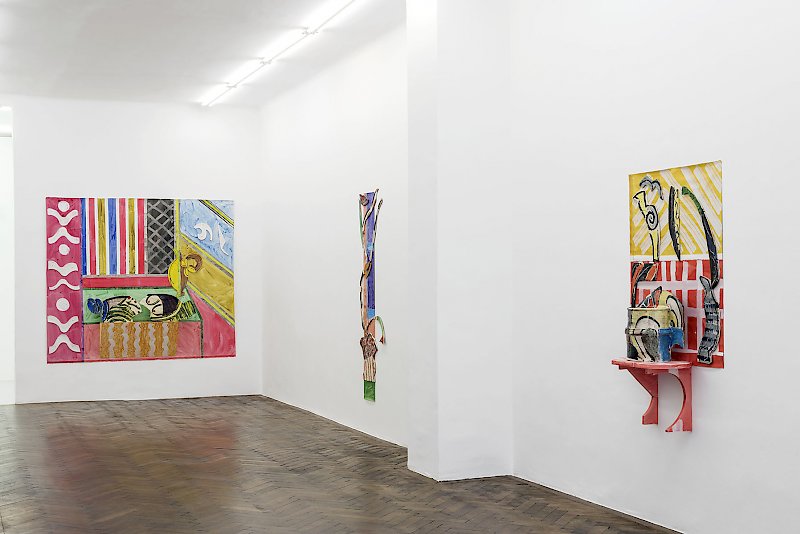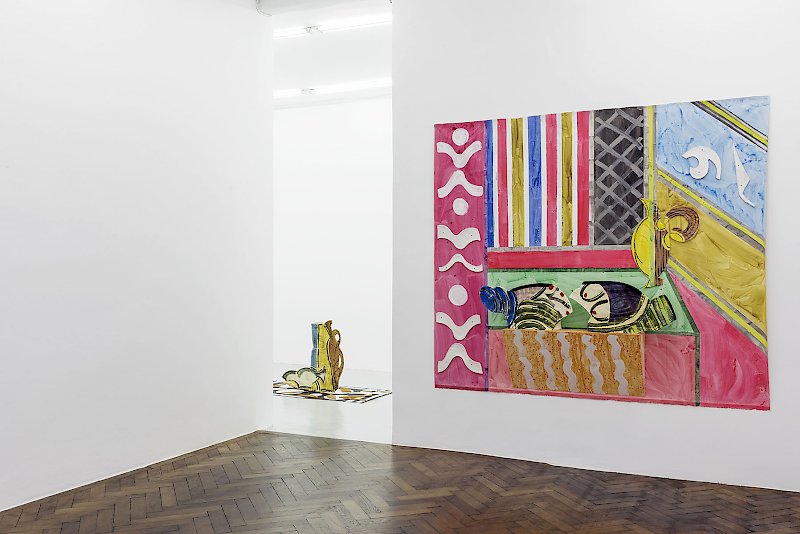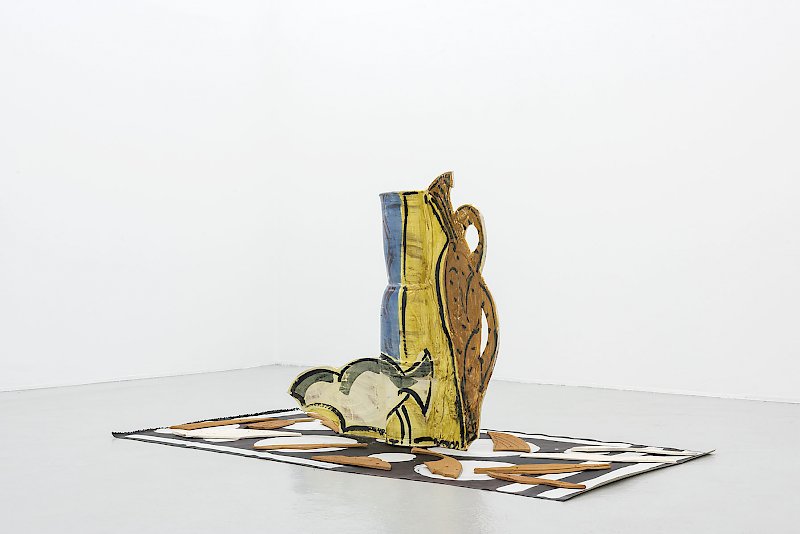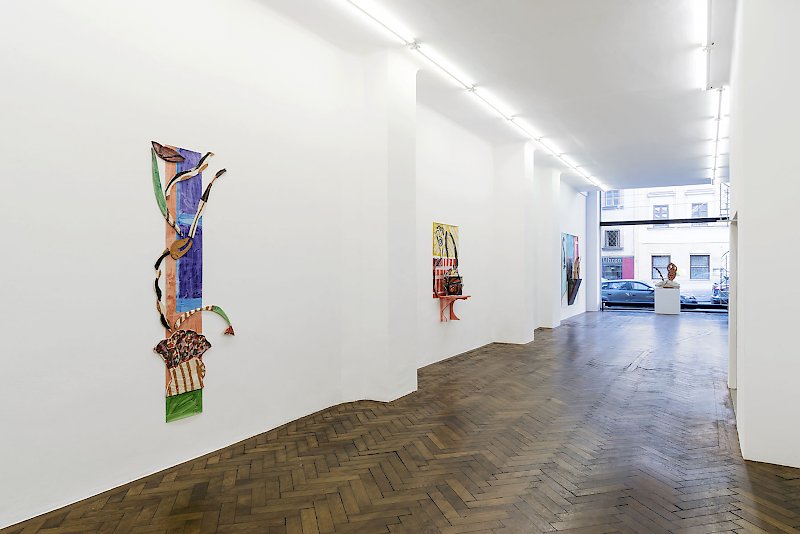dein Flügel ist abgerissen
versuch’ zu schlafen…laß mich nur machen…
ich mach’ dich wieder gesund
und der Wächter geht weg auf dem Kopf seine Mütze
in der hohlen Hand den verletzten Vogel
die streunende Katze trägt die Laterne
und zeigt den beiden den Weg.
In his Aesthetica (1750) Alexander Gottlieb Baumgarten makes use of the word “confusion” in relation to representation. Terry Eagleton explains in this regard that “in their organic interpenetration, the elements of aesthetic representation resist that discrimination into discrete units […] But this does not mean that such representations are obscure: on the contrary, the more “confused” they are –the more unity-in-variety they attain– the more clear, perfect and determinate they become.”[1]
Betty Woodman’s ceramic works are very much about this confusion, not meant as muddle but as fusion. They are a hybrid of infinite suggestions.
Woodman's interest in pottery started in the mid 1940s, when she found herself amazed by the magical potential of clay and glazes, and continues till the present day in constant research and variation. Integrating fascinations from Minoan, Etruscan, Greek, Roman cultures (just to name a few) Betty Woodman managed to place herself into the pottery world (at the time mainly dominated by men). Within the wave of the Pattern and Decoration Movement, that was gaining visibility in the 1970s and that on one hand was connected to feminist art and on the other moving against Minimalism and Conceptualism, she succeeded in creating a practice that is a bridge between crafts and arts. In fact, while being charmed by the functionality of the objects, Woodman did not want her pieces to be perceived only for their functions. And precisely for this reason she started exploring the subject of the vessel and began using it as a canvas. Moving from traditional pottery, Woodman began questioning its canons and creating objects that would be perceived with a Baroque-like approach, that is to say “in movement”, as a clash of forces. Far from being a monolith, her vessels change radically according to the perspective from which they are looked at. Domestic subjects are replicated in a sort of Brancusian infinity and multiplicity. Repetition here is not repetition of the sameness, but (in a Deleuzian acceptation) a repetition that conceals its own variability and becomes dynamic through difference.
The table tilted in a matissian fashion, the plaid, the window, the carpet belong all to interior settings, the ones Betty Woodman draws out inspiration from. They are objects and theaters of the imaginable universal and yet subjective domestic that recall rituals and patterns of sociability dear to the artist. In Florentine Interiors the vessel is therefore not anymore only a functional object. It becomes sculpture and becomes painting, and it can be placed anywhere: on a table, on a carpet, in front of the window. It is always a vessel, but it’s also a vessel about a vessel and a vessel of something else. One thing generates another, the vase may generate a room, an architecture, a theater, an illusion and the other way around.
Betty Woodman (born 1930 in Norwalk, Connecticut, lives and works in New York City and Antella, Italy).
Her work has been shown in an extensive retrospective at The Metropolitan Museum of Art, New York, in 2006 and at the Museo Marino Marini, Florence in 2015. The latter exhibition has travelled to the ICA, London in 2016.
[1] Eagleton, Terry. The Ideology of the Aesthetic (Malden: Blackwell Publishing, 1990)
Image: Betty Woodman. Museum View. 2012. Glazed earthenware, epoxy resin, lacquer, paint, canvas. 218 x 218 x 30 cm. unique. Courtesy the artist, Galerie Isabella Bortolozzi, Berlin.










